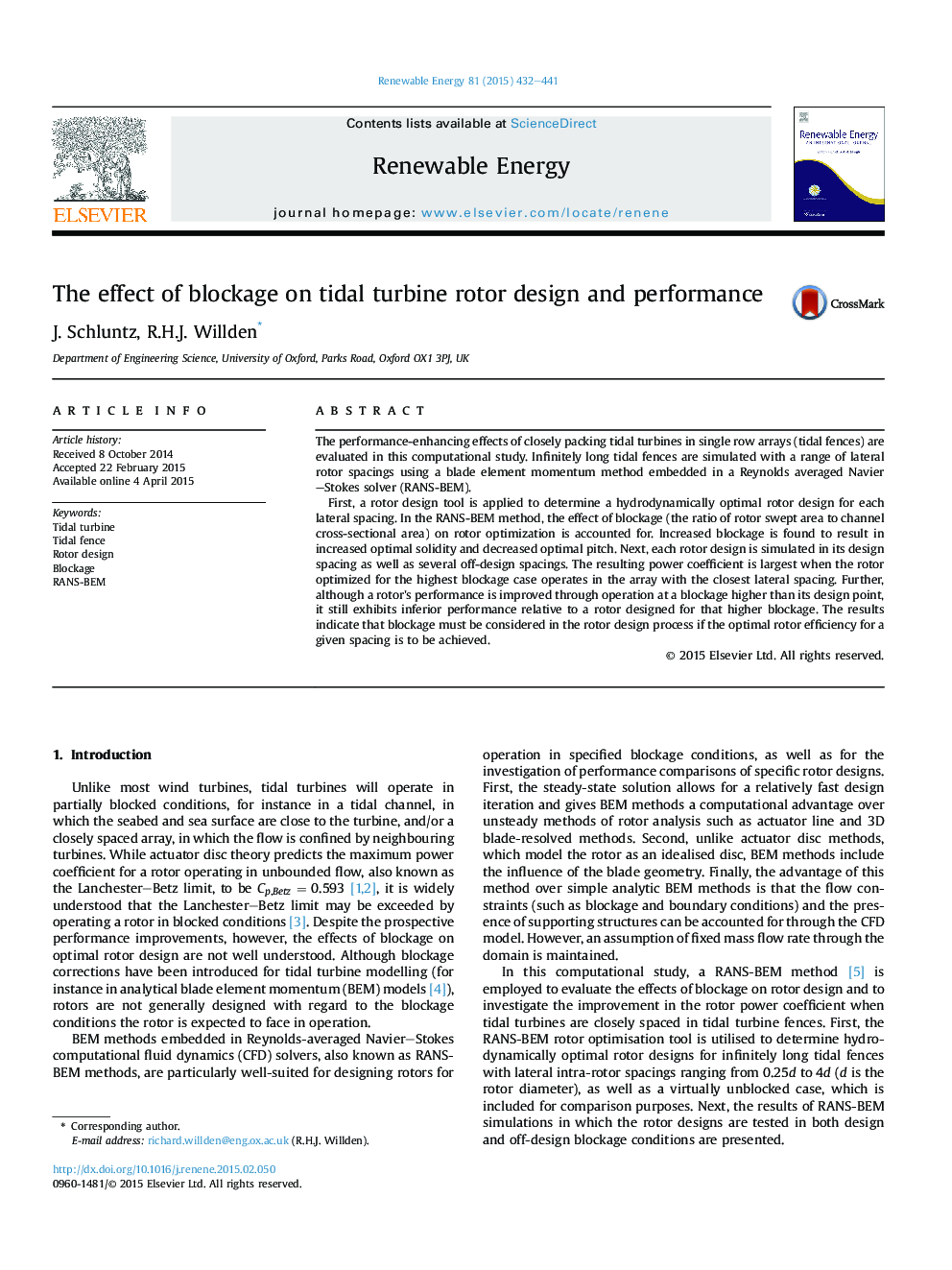| Article ID | Journal | Published Year | Pages | File Type |
|---|---|---|---|---|
| 6767090 | Renewable Energy | 2015 | 10 Pages |
Abstract
First, a rotor design tool is applied to determine a hydrodynamically optimal rotor design for each lateral spacing. In the RANS-BEM method, the effect of blockage (the ratio of rotor swept area to channel cross-sectional area) on rotor optimization is accounted for. Increased blockage is found to result in increased optimal solidity and decreased optimal pitch. Next, each rotor design is simulated in its design spacing as well as several off-design spacings. The resulting power coefficient is largest when the rotor optimized for the highest blockage case operates in the array with the closest lateral spacing. Further, although a rotor's performance is improved through operation at a blockage higher than its design point, it still exhibits inferior performance relative to a rotor designed for that higher blockage. The results indicate that blockage must be considered in the rotor design process if the optimal rotor efficiency for a given spacing is to be achieved.
Keywords
Related Topics
Physical Sciences and Engineering
Energy
Renewable Energy, Sustainability and the Environment
Authors
J. Schluntz, R.H.J. Willden,
